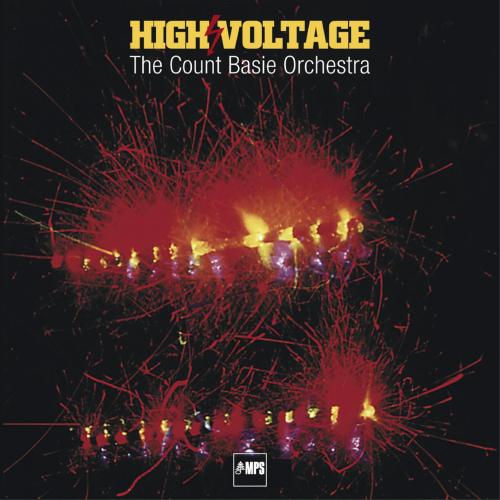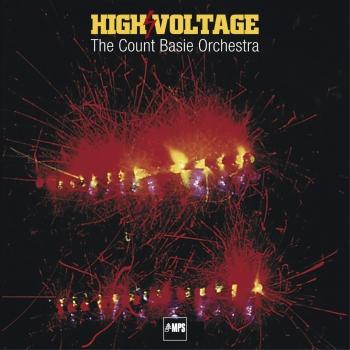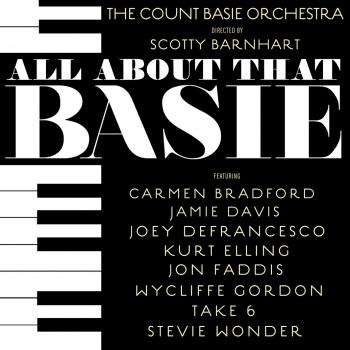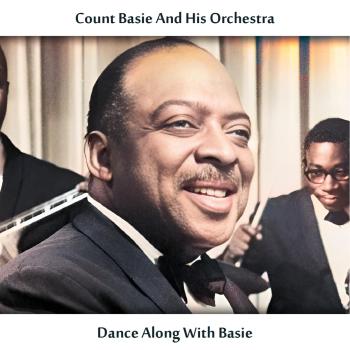
High Voltage (Remastered) The Count Basie Orchestra
Album Info
Album Veröffentlichung:
1970
HRA-Veröffentlichung:
09.06.2017
Das Album enthält Albumcover
- 1 Chicago 02:47
- 2 Have You Met Miss Jones 02:43
- 3 The Lady Is a Tramp 02:56
- 4 I'm Getting Sentimental over You 02:48
- 5 Bewitched 04:02
- 6 Day in Day Out 02:36
- 7 Get Me to the Church on Time 02:15
- 8 When Sonny Gets Blue 03:39
- 9 On the Sunny Side of the Street 02:16
- 10 Together 03:10
- 11 If I Were a Bell 03:08
- 12 I Didn't Know What Time It Was 02:12
Info zu High Voltage (Remastered)
When in January, 1970 Count Basie entered the studio with his 17-piece big band to record “High Voltage”, he ushered in the last full decade as bandleader of his Orchestra. The Orchestra had left its imprint on the sixties by recording with the likes of Frank Sinatra and Ella Fitzgerald. There would be more great albums with star vocalists in the seventies, but the band’s purely instrumental works, which had begun in 1965, would also continue. Back then Basie had engaged acclaimed Cuban composer/arranger Chico O’Farrill to arrange the music for such concept albums as “Basie Meets Bond” and “Basie’s Beatle Bag”, transforming them into crossover gems. On “High Voltage” O’Farrill demonstrates his affinity to Basie’s big band sound, this time with a repertoire of standards. For this album, Basie specifically chose pieces the band had never recorded in their more than 30-year existence. This is saying something, since the band covers such an impressive span of jazz history, from the beginning of the swing era to the bop-influenced bands of the 50’s on through to the present album. The Count’s new drummer Harold Jones propels Fred Fisher’s “Chicago” with a tremendous drive. The Rogers and Hart classic “Have You Met Miss Jones” features beguilingly dense deep-register horn lines and an almost languorous piano, and Eric Dixon’s tasty flute solo spices up “The Lady Is A Tramp”. With its smoky sophistication, Eddie Lockjaw Davis’ Tenor dominates “Bewitched”, whereas guest trumpeter Joe Newman’s muted tongue-in-cheek solo highlights “Day In Day Out”. Of course, Basie himself also steps forward: for instance, on the Fats Waller-like intro to “I’m Getting Sentimental Over You”, and with the playful grace notes on “If I Were A Bell”.” Reminiscent of the Las Vegas shows the band performed with Frank Sinatra, “Get Me To The Church On Time” is also a masterful dialogue between the horn sections.
Count Basie, piano
Sonny Cohn, trumpet
Gene Goe, trumpet
Joe Newman, trumpet
Waymon Reed, trumpet
Frank Hooks, trombone
Grover Mitchell, trombone
Buddy Morrow, trombone
Bill Hughes, bass trombone
Bill Adkins, alto saxophone
Jerry Dodgion, alto saxophone
Eric Dixon, tenor saxophone, flute
Eddie "Lockjaw" Davis, tenor saxophone
Cecil Payne, baritone saxophone
Freddie Green, guitar
George Duvivier, bass
Harold Jones, drums
Chico O'Farrill, direction, arranger
Recorded January 23–25, 1970 at A&R Studio, New York
Produced by Sonny Lester
Digitally remastered
Count Basie
Born in Red Bank, New Jersey, in 1904, William "Count" Basie was not always the fabled "Count". He began his career as Bill Basie, an itinerant pianist who made his living pounding keys in theaters featuring silent movies and touring on the Theater Owners Booking Agency (TOBA) circuit, a hopscotch run of independent performance venues, in black communities stretching from East to West, North and South.
TOBA was also known as Tough On Black Artists, or less affectionately Tough On Black you-know-whats. In 1927, Basie, then touring with Gonzelle White and the Big Jazz Jamboree, found himself "high and dry" in Kansas City, Missouri. It was unlikely that Basie had followed Horace Greeley's actually John B.L. Soule's entreaty to "Go West young man" and his destiny was certainly not manifest.
As Basie recounted in his autobiography, Good Morning Blues, "I don't remember what my plans were at the time, but in the meantime I got sick and had to go to the hospital."
Nevertheless, for a musician of Basie's inclinations, Kansas City was not a bad place to be stranded. In the 1920's and 30's, Kansas City was headquarters for the territory bands that played the mid and southwest. KC was also a veritable cauldron for the heady mixture of blues principles, ineffably swinging rhythms and brilliant instrumentalists that coalesced into one of the signature sounds of American music, both popular in its appeal and substantial in its musical import.
Basie quickly fell in with the best of the territory bands, including Walter Page's Blue Devils and Benny Moten's Kansas City Orchestra. By 1935, Basie's destiny was becoming manifest. He had formulated and was leading the band that epitomized Kansas City Swing, the Count Basie Orchestra. Along with the bands of Fletcher Henderson, Duke Ellington and Benny Goodman, Basie's orchestra would define the big band era.
While the media of the time crowned Benny Goodman the "King of Swing", the real King of Swinging was undoubtedly The Count. Basie's achievements, however, would transcend the Swing Era as such. The Basie orchestra evolved into one of the most venerable and viable enterprises in American music, as meaningful in its legacy and continuing productivity as any musical organization of the 20th, and now, 21st century.
Interestingly, the critical consensus charaterizes the Basie lineage in Biblical terms, as the Old and New Testament bands. The Old Testament band's style has been summed as a combination of democratically developed, or head, riff-driven arrangements, dripping with blues essence and relaxed, but relentless, swing that showcased a who's who of very distinctive instrumentalists and vocalists: Lester Young, Hershel Evans, Harry Edison, Buck Clayton, Dicky Wells, Jo Jones, Freddie Green and Jimmy Rushing among others.
In the early 1950's, The "New Testament" Count Basie Orchestra rose Phoenix-like from the ashes of the Big Band era. For the last fifty plus years, the Count Basie Orchestra has been an arranger's palette. Thad Jones, Ernie Wilkins, Neal Hefti, Sammy Nestico, and Frank Foster, to name a few of the more prominent Basie's penmen, have added volumes to the Basie Library. Through them, the Basie repertoire has continued to broaden harmonically and rhythmically, making it more than hospitable to the talents of successive generations of musicians. As Basie allowed for certain measure of change and for a variety of voices to emerge on the platform he created, his remained the ultimate sensibility.
Since Basie's passing in 1984, Thad Jones, Frank Foster, Grover Mitchell, Bill Hughes and now Dennis Mackrel have led the Count Basie Orchestra and maintained it as one of the elite performing organizations in Jazz.
Current members include musicians hired by Basie himself: John Williams (joined in 1970), Dennis Mackrel (joined in 1983), Carmen Bradford (joined in 1983), Clarence Banks (joined in 1984), as well as Mike Williams (1987, formerly w/Glenn Miller, NTSU 1 O'Clock), Doug Miller (1989, formerly w/Lionel Hampton), Scotty Barnhart (1992) and members who have joined in the last 15 years: David Keim (formerly w/Stan Kenton), Alvin Walker, Will Matthews, Marshall McDonald (formerly w/Lionel Hampton, Paquito D'Rivera's United Nations Jazz Orchestra), Doug Lawrence (formerly w/Benny Goodman, Buck Clayton), Cleave Guyton (formerly w/Lionel Hampton, Duke Ellington Orchestra), Freddie Hendrix (Illinois Jacquet, Charles Tolliver) and our newest members: Mark Williams (Howard University), Bruce Harris, Bobby Floyd and Marcus McLaurine (formerly w/Clark Terry)
Dieses Album enthält kein Booklet












